About the Yamaha A-S1100

Stereo sound for the serious listener
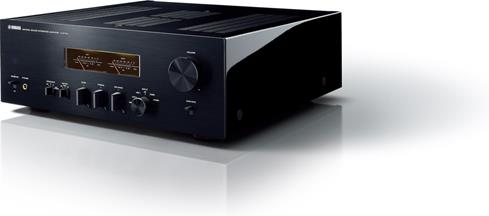
The Yamaha A-S1100 is a musical powerhouse and a cool, retro-looking centerpiece for your stereo system.
Stereo sound for the serious listener
One thing all audiophiles have in common is their tireless pursuit of pristine stereo sound. That's why we love a good classic-style integrated amp like the Yamaha A-S1100. Its meticulous internal design is driven by one important objective: to serve your speakers a steady diet of clean power so they can perform to their fullest potential, while preserving every detail of your music. Combining Yamaha's latest audio technology with vintage-style features, the A-S1100 is a modern take on a classic amp, without any extraneous features coming between you and your music.
Quality construction, inside and out
Yamaha's A-S line of integrated amps is a favorite among some of our savviest audiophile customers, and the A-S1100 looks to be another winner. If you're among those discerning enough to pick one up, we can't wait to hear what you think of it. Probably the first thing you'll notice when you unbox your new A-S1100 is its substantial weight. That's a great indicator of its high-quality internal components. Externally, this retro-styled amp has plenty of "wow" factor, too. Its aluminum front panel and piano black wooden side panels make it an eye-catching centerpiece for your stereo system. Refined utilitarian accents like machined aluminum knobs and softly illuminated level meters provide the finishing touches to the A-S1100's stylish look.
Clean, pure sound
The A-S1100 has inputs for six analog audio components, including a turntable. This amp owes its impressive stereo performance in large part to Yamaha's Floating and Balanced Power Amplifier design. It employs a symmetrical layout with isolated circuitry, ensuring a high signal-to-noise ratio and a large, well-defined soundstage. This design separates the power amp circuit from the ground, so sound quality isn't adversely affected by tiny voltage fluctuations. The fully balanced signal path ensures an ultra-low-noise signal. Pure brass speaker terminals — contoured to the shape of human fingers so they're easy to turn and fasten tightly - reflect Yamaha's obsession with quality. They've taken pains to ensure that this final, critical link in the audio chain provides a secure connection for your speakers without impacting sound quality.
Product highlights:
- 90 watts x 2 channels into 8 ohms (20-20,000 Hz) at 0.07% THD
- 150 watts x 2 channels into 4 ohms (20-20,000 Hz) at 0.07% THD
- 4-ohm capability allows use with a wide range of speakers
- signal-to-noise ratio: 100 dB (CD), 90 dB (phono MM), 83 dB (phono MC)
- large illuminated level meters (VU or peak) for left and right channels
- large-capacity power supply delivers energetic, dynamic sound with a fast response
- symmetrical amp layout separates left and right channel circuits for improved signal-to-noise ratio
- aluminum front panel and wood side panels
- discrete phono preamplifier
- rotary bass and treble controls
- front-panel switching for 2 pairs of speakers
- all-stage fully discrete configuration for strong reproduction of high frequencies
- electronic volume control for optimum sound dynamics
- low-impedance design ensures powerful bass response
- parallel volume and tone controls
- remote control
Connections and Dimensions
- 6 pairs of RCA audio inputs, including MM (moving magnet)/MC (moving coil) phono input
- 1 stereo RCA record output
- Main Direct Input lets you connect the A-S1100 to a surround sound receiver or pre/pro to power your home theater's front left and right speakers
- 2 pairs of heavy-duty brass screw-type speaker terminals
- full-size headphone jack
- 12-volt trigger and remote in/out for use with external controllers
- detachable power cord
- 17-1/8"W x 6-1/8"H x 19-3/16"D
- weight: 51.4 lbs.
- warranty: 2 years
- MFR # A-S1100BL
What's in the box:
- Integrated stereo amplifier
- 6.5' AC power cord
- Remote control (RAS32)
- 2 "AA" batteries
- Owner's Manual (En/Fr)
- Safety Brochure (En/Fr)
- US Warranty card
- "Yamaha Worldwide Representative Offices" Note
Customer reviews for Yamaha A-S1100
Loading...
Loading reviews...
Average review:
5.0 out of 5 starsThanks for submitting your review
Customer photos
This review was collected as part of a promotion
Pros:
Cons:
More details on the Yamaha A-S1100
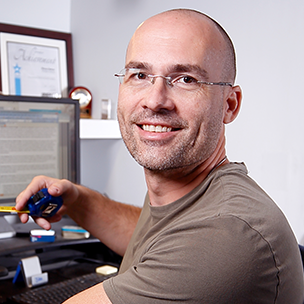
Features & specs
| Performance Specs | ||
|---|---|---|
| Watts RMS per Channel (8-ohms) | 90 | |
| Watts RMS per Channel (6-ohms) | Not given | |
| Watts RMS per Channel (4-ohms) | 150 | |
| Frequency Bandwidth | 20-20k | |
| THD | 0.07% | |
| Minimum Impedance | 4 ohms | |
| Amplifier Class | AB | |
| Signal to Noise Ratio | 100 | |
| DAC Bit Depth | N/A | |
| DAC Sample Rate | N/A | |
| Features | ||
| Built-in DAC (Digital to Analog Converter) | No | |
| Wi-Fi | N/A | |
| Built-in Radio Tuner | None | |
| Room Correction | --- | |
| High-res Audio Playback | ||
| From Network | No | |
| From USB Thumb Drive (USB-A) | No | |
| From Computer (USB-B) | No | |
| Bluetooth | ||
| Version Info | N | |
| Receiver Mode | No | |
| Transmitter Mode | No | |
| AAC Playback | No | |
| aptX Playback | No | |
| aptX-HD Playback | No | |
| LDAC Playback | No | |
| Connections | ||
| RCA Line-level Inputs | --- | |
| XLR Line-level Inputs | --- | |
| Phono Input | Yes | |
| Optical Digital Inputs | No | |
| Coaxial Digital Inputs | No | |
| USB Input | No | |
| HDMI Inputs | --- | |
| Stereo Preamp Outputs | --- | |
| Subwoofer Outputs | No | |
| Recording Output | Yes | |
| HDMI Output | --- | |
| Home Theater Bypass | Fixed | |
| Pre-out/Main-in Loop | No | |
| Headphone Output | 1/4" | |
| Removable Power Cord | --- | |
| Streaming Compatibility | ||
| Apple AirPlay | No | |
| Apple AirPlay 2 | No | |
| DTS Play-Fi | No | |
| Chromecast built-in | No | |
| Roon | No | |
| HEOS | No | |
| BluOS | No | |
| Dimensions and Warranty | ||
| Width (inches) | 17-1/8 | |
| Height (inches) | 6-1/8 | |
| Depth (inches) | 19-3/16 | |
| Weight (pounds) | 51.4 | |
| Parts Warranty | 2 Years | |
| Labor Warranty | 2 Years | |
Product Research
Audio Section
Inputs & Outputs
Front-Panel + Remote Control
Audio Section
Floating & Balanced Amplifier Design: The basic design of the A-S1100's power amplifier circuit adopts a unique floating and balanced power amplifier technology developed by Yamaha. Adopting output elements with the same polarity on the plus and minus sides of the output stage, along with completely separating the NFB (negative feedback) circuit and power supply into a total of four plus and minus sides of the left and right channels, results in a thoroughly symmetric push-pull operation of the output stage. Completely floating the entire power amplifier circuit from the ground removes any negative impact of minute voltage fluctuations or ground noise.
MOSFET Outputs: The amplifier's output elements are comprised of MOSFETs, which provide a warm and natural sonic characteristic in the audible playback. The use of MOSFETs, which have the same polarity on the plus and minus sides, further evolves the ideal symmetrical design to eliminate sound quality variations due to difference in polarity, a major distinguishing characteristic of the floating and balanced power amplifier. This results in sound with a superior signal-to-noise ratio and superbly well-defined sound fields
Dedicated Single-Ended Amplification: Since this device employs a dedicated single-ended amplifier, it provides excellent response in the amplification of single-ended analog sound from all kinds of audio sources such as CD players and D/A converters. By fully utilizing single-ended amplification, the A-S1100 transparently draws out the intrinsic qualities of your favorite audio devices, including those made by other manufacturers.
All-Stage Full Discrete Configuration: This amplifier adopts an all-stage, fully-discrete configuration through all sound circuit stages using only the most meticulously selected, high-precision parts from input to output (applicable during tone control circuit defeat). The slew-rate of the audio signal has been improved to bring lively and strong response to high musical notes. Moreover, the tone control circuit lets you switch to the defeat-state and enable a full-discrete configuration that bypasses the op-amp IC of the internal circuit, simply by setting the BASS / TREBLE knobs to their center points.
Low-Impedance Design: By strengthening the capacity of the high-current route (raising the section area of the cable core wire to about 60% of that of the A-S1000) and by pursuing thorough low-impedance design and forming screw-clamped wire connections of major ground points, the A-S1100 boasts excellent speaker drive power with a damping factor of more than 250 (8Ω, 1 kHz). Along with the large capacity power source transformer equipped with an EI core, this design delivers bass reproduction that is powerful.
Symmetrical Design: The left-right symmetrical construction with the power supply in the center and the ends of the power amp blocks achieves greater separation of the left and right channels. This is necessary for proper two-channel stereo reproduction and ideal weight balance. The center frame is fine-tuned which extends from the front to the back of the casing and with specially made metal legs (selectable from spike or pad), the A-S1100 has superb mechanical rigidity and installation stability that dramatically lessens the impact of external vibrations on sound quality.
Large Capacity Power Supply: The A-S1100 employs an original EI transformer, carefully customized for optimum compatibility with the chassis. Combining four large capacity carbon sheath block capacitors delivers an energetic sound, even during high volume that is only possible with the A-S1100. Moreover, since the control amp and control system is equipped with twelve shunt type local regulators that prevent deterioration caused by current fluctuation, a clean and stable power supply is achieved. The EI transformer is mounted on the chassis using a brass washer, restricting internal vibration that would result in noise.
Elegant & Sophisticated Design: The refined design and construction of the A-S1100 reflects the commitment to fine craftsmanship and art that Yamaha has exhibited for over a century as a world-class musical instrument maker. This amplifier offers a metal front panel and side wood panels that have been beautifully integrated by the masterful use of advanced technology. Moreover, the dials and tone controls are machined aluminum knobs for a richly textured finish and graceful touch.
Inputs & Outputs
6 RCA Inputs: The Yamaha A-S1100 is equipped with six unbalanced analog RCA stereo inputs for connecting an external audio source such as a CD player, AM/FM tuner, Turntable, and/or cassette deck; as well a preamp or AV receiver. There is also one analog RCA stereo output for recording through the amplifier.
Main Direct Input: One of the A-S1100's analog inputs is labeled Main Direct Input. This input allows you to connect your preamplifier or AV receiver directly to the A-S1100 and use the Yamaha integrated amp as a power amplifier to drive a pair of speakers in your system.
Note: Audio signal coming into the amplifier's Main Direct Input is only output through the speaker outputs of the A-S1100. No audio signal will by output from the stereo amplifier's Pre-Out, Rec Out, or Headphone Output.
Discrete Configured Phono Preamp: The phono preamp is comprised of a MC head amp and an equalizer amp, each of which are discretely configured, resulting in a rich sound with pronounced musicality when playing vinyl records with both MC and MM phono cartridges. The unit's Phono input consists of stereo RCA jacks and a ground terminal. There is a switch on the back panel which allows you to indicate what type of turntable cartridge (MC/MM) you are using.
High-Quality Binding Post Terminals: Yamaha's meticulous obsession with quality continues through to the speaker terminals, which are the last and crucial link in the audio chain. Featuring two sets of binding-post speaker terminals (A&B) with originally designed handles; these are created by cutting pure brass enabling secure connection with no reduction in sound quality. Contoured to the shape of human fingers, they not only look beautiful, but can be turned easily and fastened tightly with minimal effort. They are also compatible with connections using banana plugs.
Pre-Outs: The Yamaha integrated amplifier is equipped with a stereo preamp output for connecting a powered subwoofer or to use the A-S1100 as a preamplifier and connect it to a larger power amplifier to power your speakers.
Headphone Jack: The A-S11000 integrated amplifier is equipped with a front-panel 1/4" headphone jack for connecting a pair of headphones (sold separately). Once a set of headphones are connected, the amplifier's speaker outputs mute automatically.
Trigger Input + Remote Input/Output: The A-S1100 features a 12V trigger input (3.5mm) to synchronize power on /off with another component that features a 12V trigger output. The integrated amp also has remote input and remote output minijack terminals for use with external IR receivers and compatible Yamaha components.
Front-Panel + Remote Control
Front-Panel Controls: The integrated amplifier offers the following convenient front-panel controls - Volume, Input Select, Bass & Treble, Balance, and A+B Speaker Selection.
Remote Control: The supplied remote control features a design complementary to the aluminum front panel of the amplifier with a simple, easy-to-understand button layout and a gorgeous metallic texture. In addition to the basic volume adjustment and input switching controls of the A-S1100, it can also be used to operate Yamaha CD players (sold separately).
Electronic Volume Control: Yamaha utilized a high-quality digital volume control specially designed by New Japan Radio Co., Ltd., which consists only of ladder-type resistance, removing the impact of slew-rate decline or coloring of the sound. This delivers higher purity in the sound and excellent, fast response to large volume changes and steep transients. Moreover, the tone controls employ a triple-parallel method, minimizing the detrimental impact on sound quality seen with straight-line tone controls.
Triple-Parallel Tone Control: In addition, the bass, treble, and common circuits each utilize simple construction in which the NFB of the amp is not used and the CR elements are simply fixed in a straight line. This ensures exceptional sound reproduction even when tone control is applied. When tone defeat is applied, straight signal flow from one volume circuit to a discrete configuration buffer amp is achieved.
Level Meters: The center of the main unit features level meters that provide visual enjoyment of the music with rapid or delicate movement of the needles. The meter is illuminated softly from inside by LEDs, giving a warm, beautiful lamplight look. The meter indicators, along with VU display, can be switched to show peak power as well, according to your preferences. The meter's window has been precision-fit to the panel and lays completely flat with no gaps for an elegant and beautiful appearance.
Auto Power Standby: The integrated amplifier entersstandby mode automatically if not operated for approximately 8 hours.
Loading...
Loading accessories...
Customer Q&A
8 questions already asked
Loading...
Loading articles...


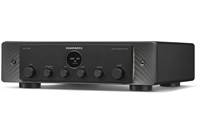
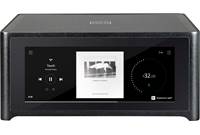
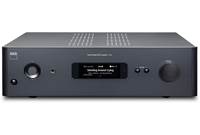






Very good amplifier; a very big step up from the s501, etc. Much fuller and more room filling sound. Fine details in the music are easily heard. Money well spent.
John from Las Vegas, NV